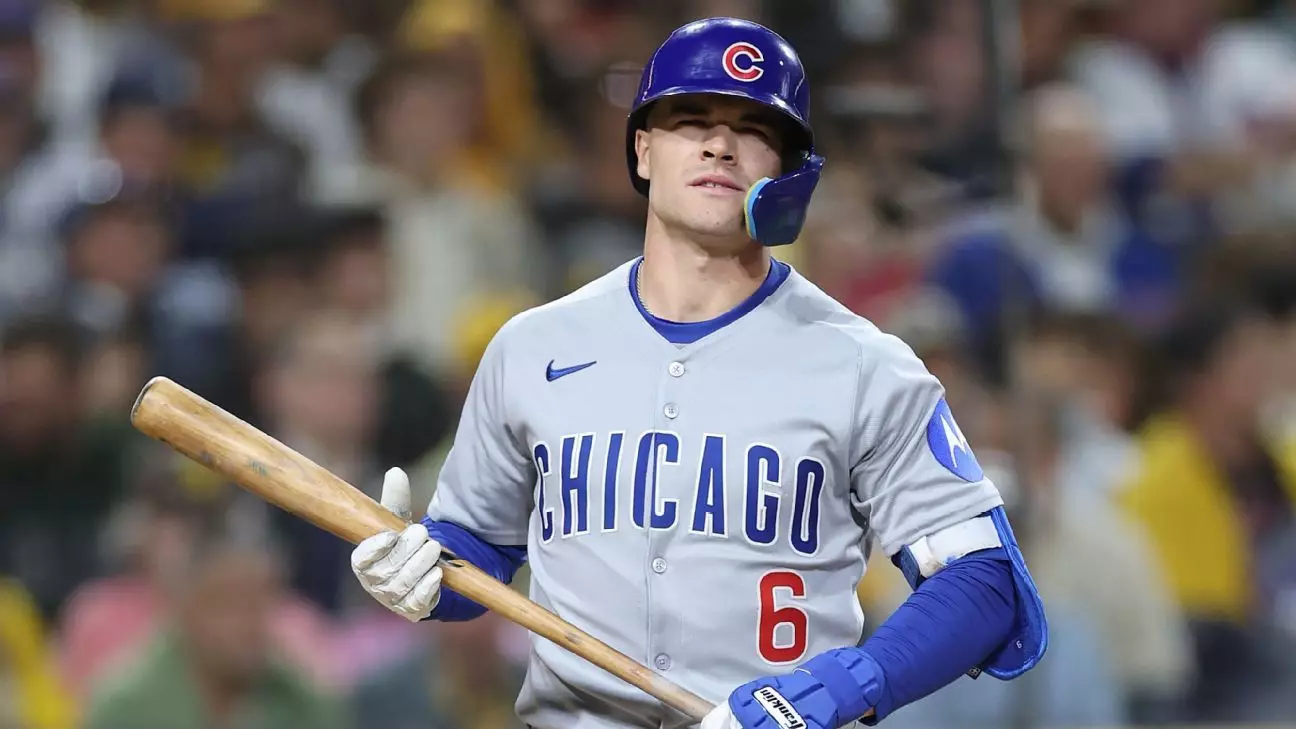In a stark yet pivotal move, the Chicago Cubs have opted to send their promising rookie third baseman, Matt Shaw, to Triple-A Iowa after a challenging start to his major league career. Drafted as the 13th pick in the 2023 amateur draft, Shaw has struggled significantly, recording a dismal batting average of .172 with only a solitary home run and three RBIs across 58 at-bats. These statistics reveal an alarming trend: 18 strikeouts in 68 plate appearances, indicative of the pressing need for a strategic reassessment in his game strategy.
Cubs manager Craig Counsell’s statement encapsulates the approach rooted in the team’s philosophy: “We want to get a productive player back.” The decision to demote Shaw is not merely punitive but rather a calculated effort to enhance his performance long-term. Young players often require nurturing and time to adjust to the rigor of major league competition. By allowing Shaw to refine his skills at the Triple-A level, the Cubs aim to rejuvenate his confidence and spark his potential as a significant offensive contributor.
Understanding the Dynamics of Young Talent
Counsell, with his rich background as a former major league infielder, articulated a critical reality faced by emerging talent—struggles are a natural part of development. “Sometimes it is just some success that kind of reframes it,” he noted, highlighting the importance of positivity in a player’s journey. This perspective not only reflects an understanding of Shaw’s current ordeal but also sheds light on the psychological aspects of player development. Consistent success at the minor league level could very well serve as the catalyst needed for Shaw to regain his confidence and eventual competitiveness in the big leagues.
Moreover, Shaw’s situation exemplifies a broader trend in the league where teams are increasingly willing to prioritize developmental strategies over immediate performance metrics. It prompts a conversation about the pressures placed on rookie players—shining examples of talent often face formidable obstacles during their early ventures into professional sports.
Injuries Complicating the Cubs’ Season
The Cubs have also been hit with a spate of injuries, the most pressing being the elbow impingement that has sidelined right-hander Eli Morgan, forcing him to the 15-day injured list. This situation is compounded by the loss of ace pitcher Justin Steele due to a season-ending injury, which puts additional pressure on the remaining roster. Morgan, who previously showcased a strong performance with a 1.93 ERA while with the Cleveland Guardians, now finds himself grappling with setbacks that threaten his potential.
The strategic movements within the Cubs’ lineup—reinstating infielder Vidal Brujan from the injured list while optioning Nate Pearson back to Iowa—illustrate a front office in flux as they grapple with injuries. The recall of left-hander Luke Little and right-hander Daniel Palencia is a clear attempt to bolster the pitching staff in the face of adversity. Such changes signal the Cubs’ readiness to adapt and their deeper commitment to maintaining competitiveness in a challenging season.
While the Cubs face immediate hurdles, particularly with their rookie players and injuries within the pitching staff, their proactive measures reflect a long-term commitment to developing talent. The ability to navigate the complexities of player development whilst aiming for competitive spirit lays the groundwork for a more robust future, ensuring that both the club and its players can rebound from current setbacks.

